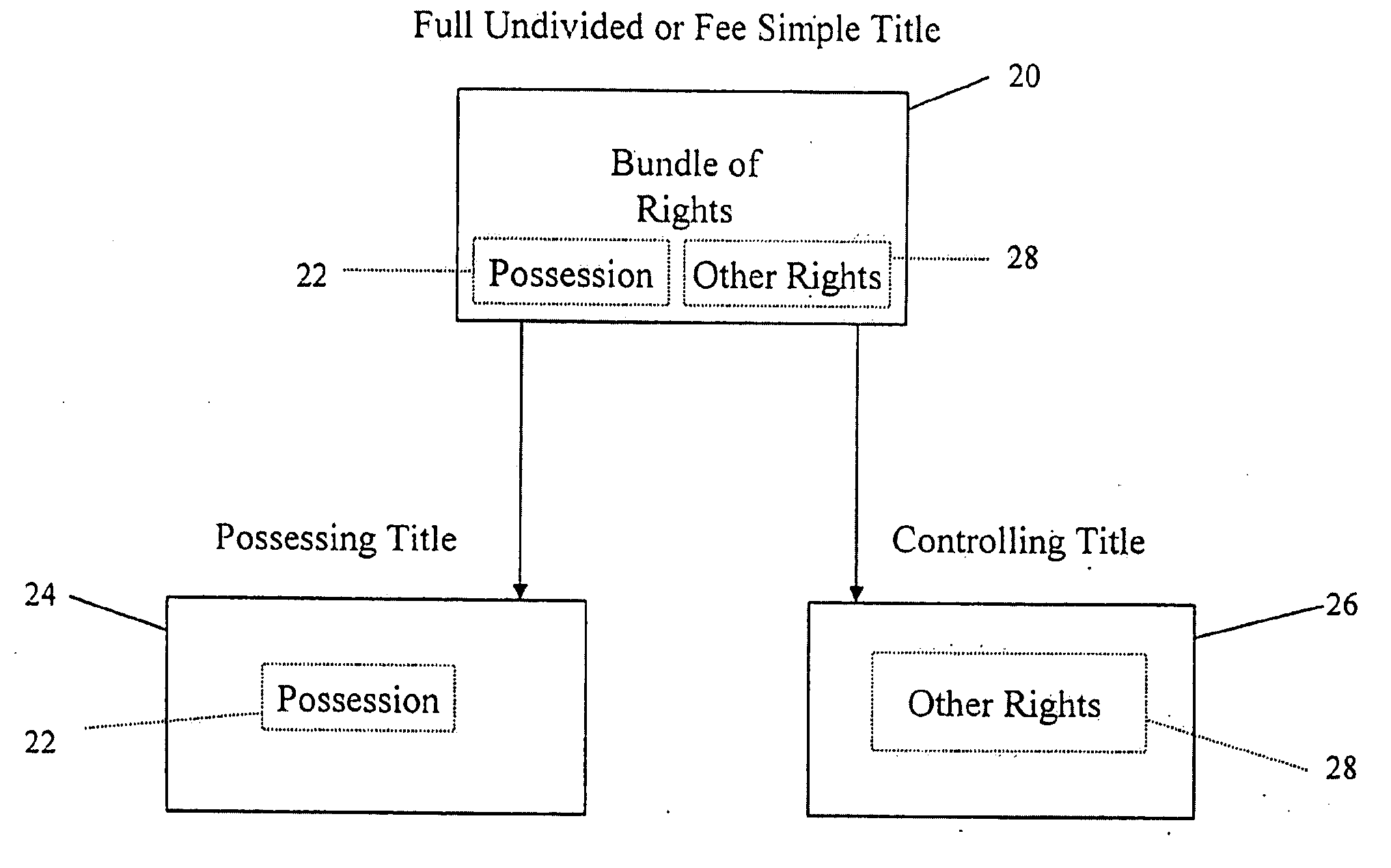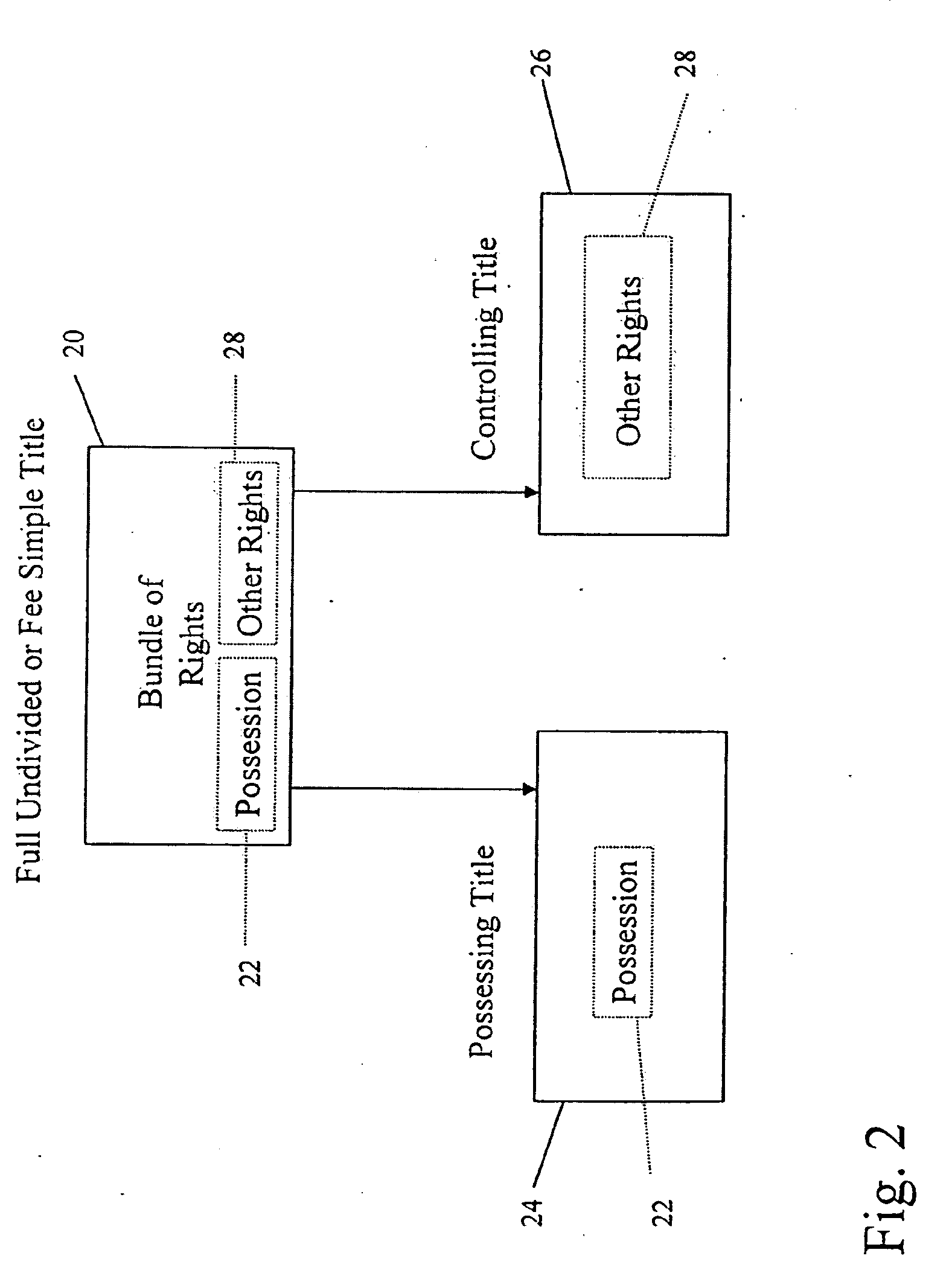Divided title property allocation method and system
a property allocation and division technology, applied in the field of resource allocation, can solve the problems of limiting the rights in the bundle, affecting the current return of the museum, and high cost of storing these objects or heirlooms, so as to maximize the value of the possessing title, optimize the condition of the property permanently, and add flexibility to resource allocation
- Summary
- Abstract
- Description
- Claims
- Application Information
AI Technical Summary
Benefits of technology
Problems solved by technology
Method used
Image
Examples
Embodiment Construction
[0032]While the invention is described below in terms of unbundling a right of possession and other rights from the bundle of rights of a full divided or fee simple title, it is to be understood that, as illustrated in FIG. 1, the invention could be applied to unbundle multiple, alternative types of rights, such as Right A, Right B, etc., illustrated at 14 and 19, from the bundle of rights of a full undivided or fee simple title, indicated at 10 in FIG. 1. As a result, a 1st divided title 12 including Right A 14, a 2nd (or more) divided title 17 including Right B (or additional rights) 19 and a 3rd divided title 16 including the remaining other rights 18 are created. It should also be clear that there may be more than one divided title including more than one right unbundled from the full undivided or fee simple title bundle of rights.
[0033]In an embodiment of the invention, with reference to FIG. 2, a full undivided or fee simple owner, and thus owner of a full undivided or fee sim...
PUM
 Login to View More
Login to View More Abstract
Description
Claims
Application Information
 Login to View More
Login to View More - R&D
- Intellectual Property
- Life Sciences
- Materials
- Tech Scout
- Unparalleled Data Quality
- Higher Quality Content
- 60% Fewer Hallucinations
Browse by: Latest US Patents, China's latest patents, Technical Efficacy Thesaurus, Application Domain, Technology Topic, Popular Technical Reports.
© 2025 PatSnap. All rights reserved.Legal|Privacy policy|Modern Slavery Act Transparency Statement|Sitemap|About US| Contact US: help@patsnap.com



